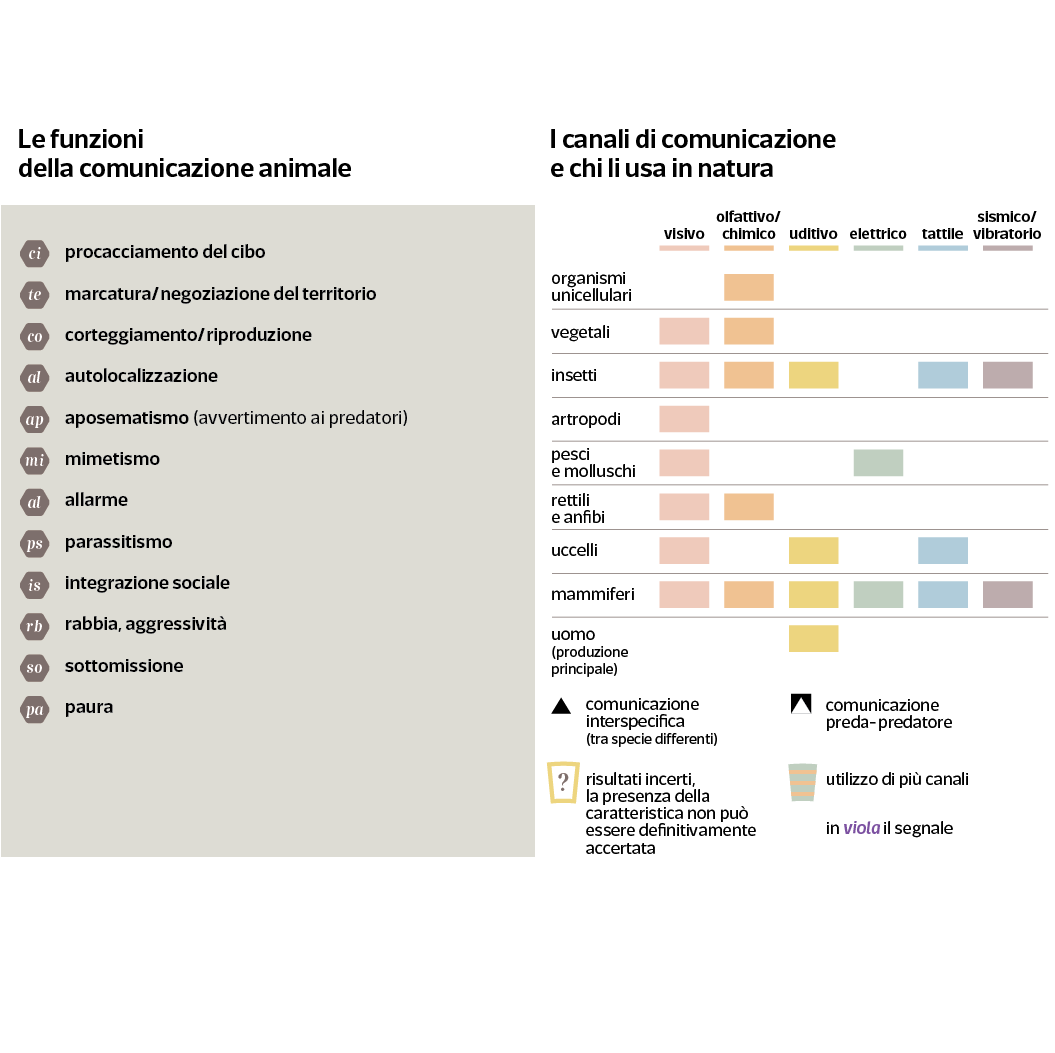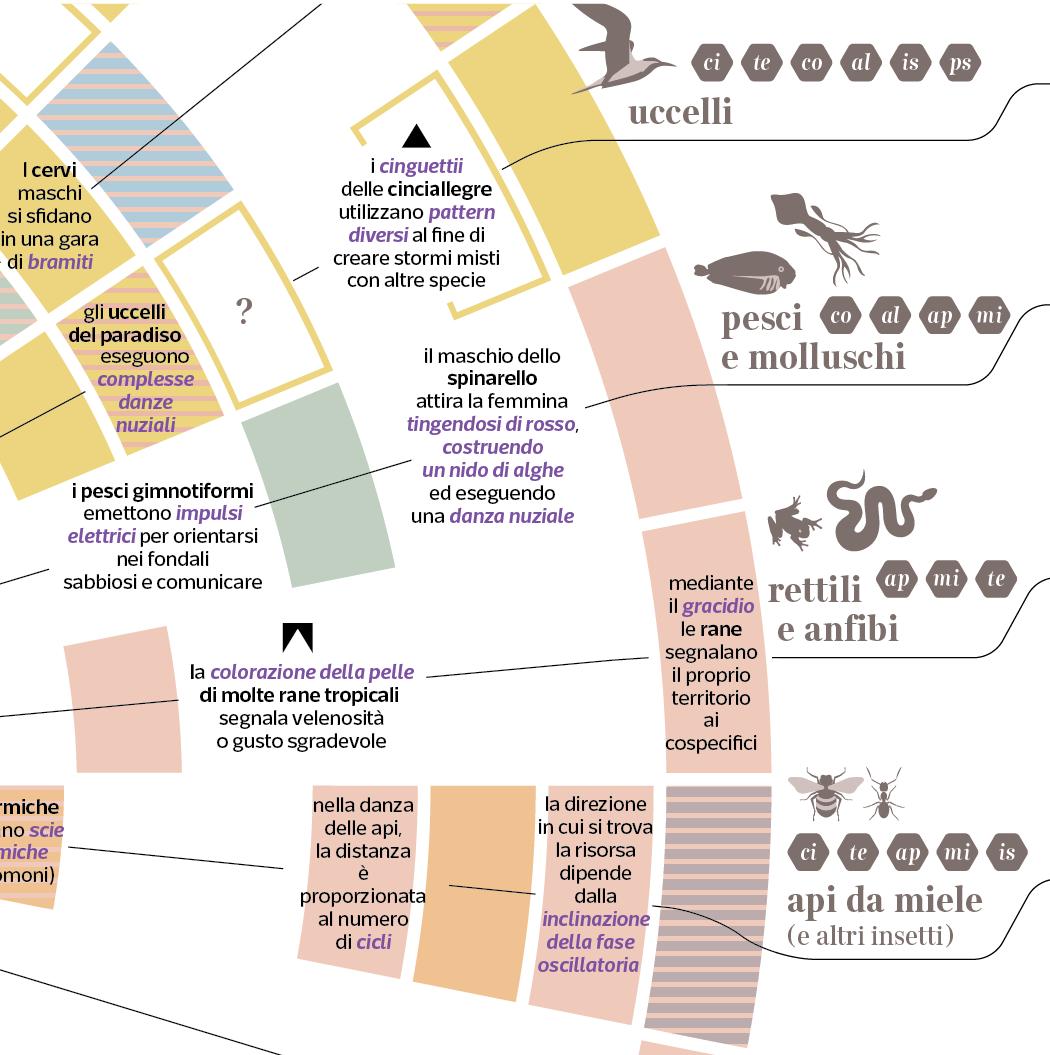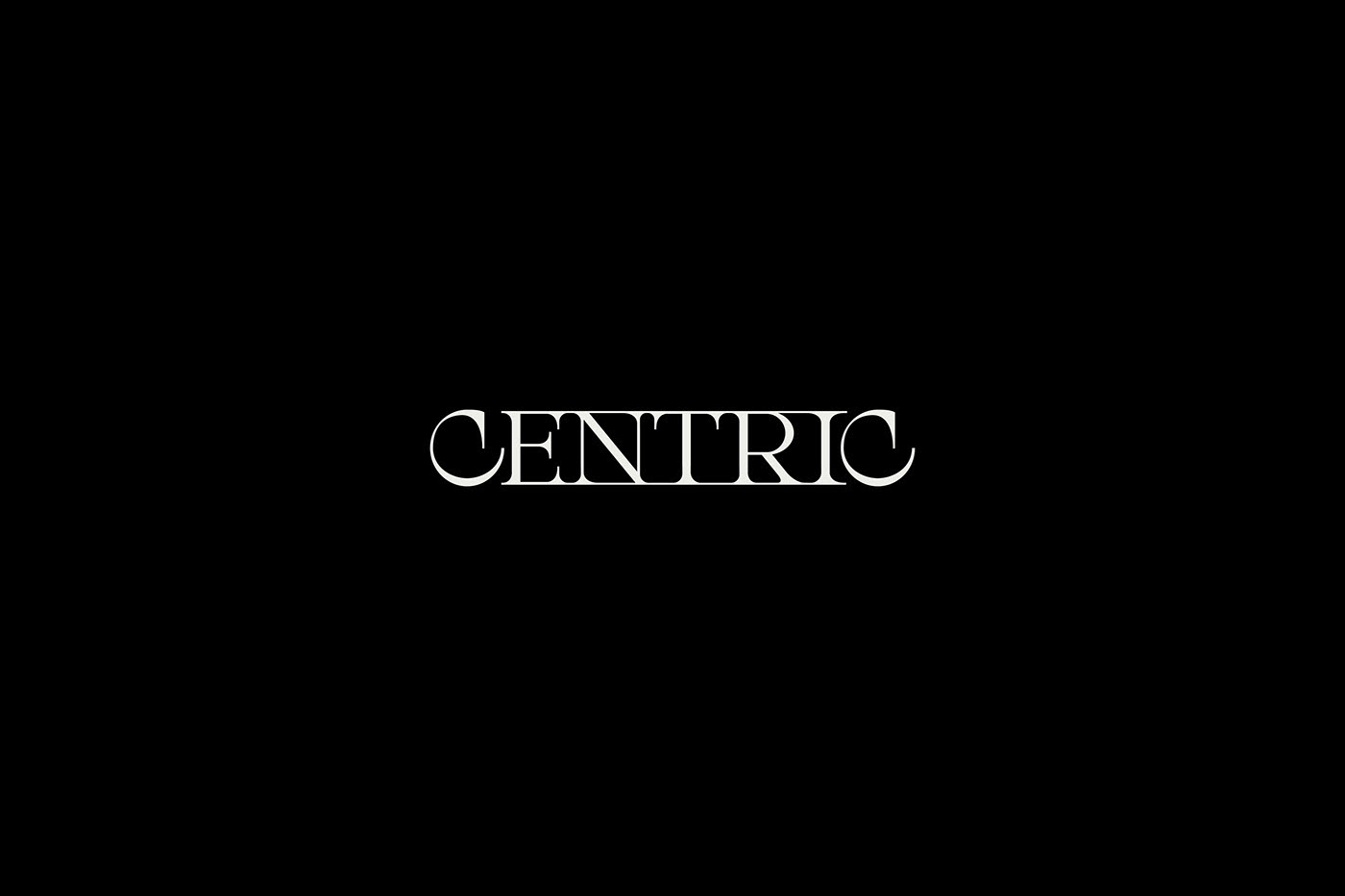A new visualization about Linguistics for La Lettura #500, on the topic of communication in the animal kingdom and how it compares with human language.

The set of 'design features' which was proposed by Charles F. Hockett in the 1960s remains probably the most influential means of approaching animal communication and evaluating how it compares in its many forms with human language. Although Hockett's perspective was restrained by his focus on the code itself rather than the cognitive abilities of its users, some of his observations still look astounding.
First, the overall vision interpreted as a vantage point:
‘Although the comparative method of linguistics, as has been shown, throws no light on the origin of language, the investigation may be furthered by a comparative method modeled on that of the zoologist. The frame of reference must be such that all languages look alike when viewed through it, but such that within it human language as a whole can be compared with the communicative system of other animals […]’
First, the overall vision interpreted as a vantage point:
‘Although the comparative method of linguistics, as has been shown, throws no light on the origin of language, the investigation may be furthered by a comparative method modeled on that of the zoologist. The frame of reference must be such that all languages look alike when viewed through it, but such that within it human language as a whole can be compared with the communicative system of other animals […]’

Secondarily, the point on semanticity:
'‘[…] Specialization refers to the fact that the bodily effort and spreading sound waves of speech serve no function except as signals. A dog, panting with his tongue hanging out, is performing a biologically essential activity, since this is how dogs cool themselves off and maintain the proper body temperature. The panting dog incidentally produces sound, and thereby may inform other dogs (or humans) as to where he is and how he feels. But this transmission of information is strictly a side effect. Nor does the dog’s panting exhibit the design feature of “semanticity”. It is not a signal meaning that the dog is hot; it is part of being hot’.
'‘[…] Specialization refers to the fact that the bodily effort and spreading sound waves of speech serve no function except as signals. A dog, panting with his tongue hanging out, is performing a biologically essential activity, since this is how dogs cool themselves off and maintain the proper body temperature. The panting dog incidentally produces sound, and thereby may inform other dogs (or humans) as to where he is and how he feels. But this transmission of information is strictly a side effect. Nor does the dog’s panting exhibit the design feature of “semanticity”. It is not a signal meaning that the dog is hot; it is part of being hot’.
Hockett also made clear how these features connect to form systems that have a clear communicative functionality, some of them being even open systems, which means, new signs can be created inside them:
‘It should be noted that some of these 13 design-features are not independent. In particular, a system cannot be either arbitrary or nonarbitrary unless it is semantic, and it cannot have duality of patterning unless it is semantic’.
‘It should be noted that some of these 13 design-features are not independent. In particular, a system cannot be either arbitrary or nonarbitrary unless it is semantic, and it cannot have duality of patterning unless it is semantic’.
Contrary to Hockett's view, another distinguished US structural linguist, Noam Chomsky, has a radically different position on animal communication.
A supporter of the existence of universal grammar, Chomsky argues that one of the problems in understanding what language is lies in the commonly mistaken assumption that the function of human language is an evolution of animal communication.
In a recent book (Why Only Us: Language and Evolution, with Robert C. Berwick), Chomsky proposes a radical distinction between human language and systems of animal communication. First of all, he argues, communication as a function of human language is meaningless. Organic systems do not have one function, or they have many: what is the function of the spine? Is it to help us stand erect? Is it to accumulate calcium? Is it to generate blood cells? Is it casing for a nerve stack?
It is actually all of these things. Evolution arguably always goes through a series of steps: a disruption takes place, for example in the form of a mutation; then comes the reconstruction stage, when nature tries to make the best of whatever happened and imitation tries to organize the new system in the best possible way. Then comes the winnowing/sifting stage, when, among the things that have been created, the more adaptable ones survive through natural selection. But nature hasn't the slightest idea of what the functions are going to be. It is just finding the best design based on what is around. Dysfunctional systems are a common outcome, too. The same is true with the human spine, as any engineer could have done a better system with it, for many of the functions we are used to carrying with it.
According to Chomsky, language has developed to be used for many functions, but not purposefully for communication among human beings, or not only for that reason, as evidence of the importance of the so-called 'inner speech' is so overpowering.
There are brain areas specifically attuned to language. Language is used for many functions like thinking, inference, planning, and reflection. Language is the prevalent form of thought, the mechanism for constructing thoughts over an infinite range, as language and thought are intimately related. We have thought insofar as we have language.
The evidence that human language did not develop from animal communication is overwhelming: for example, from Chomsky's theoretical works, it emerges that there is nothing remotely like structural dependence in any animal system. So it is for words meaning. In animal symbolic systems, the symbols do have associations with non-linguistic entities, so for instance, when we look at the cries of a monkey, these cries will take place when leaves start moving in a certain way and all the surrounding monkeys run away. We interpret that as a warning signal. In animal communication the symbols are finitely bounded, as they seem to be associated directly, one-on-one, with extra mental entities, whereas human language has nothing like that, it is indeed totally different and based on structural principles and recursive generation (i.e. the ability to create an infinite number of thoughts/structures from a finite number of symbols). In Chomsky's vision, language is a core part of human cognition, it is the language that constructs thoughts, and thus it is the language that distinguishes us from other species.
A supporter of the existence of universal grammar, Chomsky argues that one of the problems in understanding what language is lies in the commonly mistaken assumption that the function of human language is an evolution of animal communication.
In a recent book (Why Only Us: Language and Evolution, with Robert C. Berwick), Chomsky proposes a radical distinction between human language and systems of animal communication. First of all, he argues, communication as a function of human language is meaningless. Organic systems do not have one function, or they have many: what is the function of the spine? Is it to help us stand erect? Is it to accumulate calcium? Is it to generate blood cells? Is it casing for a nerve stack?
It is actually all of these things. Evolution arguably always goes through a series of steps: a disruption takes place, for example in the form of a mutation; then comes the reconstruction stage, when nature tries to make the best of whatever happened and imitation tries to organize the new system in the best possible way. Then comes the winnowing/sifting stage, when, among the things that have been created, the more adaptable ones survive through natural selection. But nature hasn't the slightest idea of what the functions are going to be. It is just finding the best design based on what is around. Dysfunctional systems are a common outcome, too. The same is true with the human spine, as any engineer could have done a better system with it, for many of the functions we are used to carrying with it.
According to Chomsky, language has developed to be used for many functions, but not purposefully for communication among human beings, or not only for that reason, as evidence of the importance of the so-called 'inner speech' is so overpowering.
There are brain areas specifically attuned to language. Language is used for many functions like thinking, inference, planning, and reflection. Language is the prevalent form of thought, the mechanism for constructing thoughts over an infinite range, as language and thought are intimately related. We have thought insofar as we have language.
The evidence that human language did not develop from animal communication is overwhelming: for example, from Chomsky's theoretical works, it emerges that there is nothing remotely like structural dependence in any animal system. So it is for words meaning. In animal symbolic systems, the symbols do have associations with non-linguistic entities, so for instance, when we look at the cries of a monkey, these cries will take place when leaves start moving in a certain way and all the surrounding monkeys run away. We interpret that as a warning signal. In animal communication the symbols are finitely bounded, as they seem to be associated directly, one-on-one, with extra mental entities, whereas human language has nothing like that, it is indeed totally different and based on structural principles and recursive generation (i.e. the ability to create an infinite number of thoughts/structures from a finite number of symbols). In Chomsky's vision, language is a core part of human cognition, it is the language that constructs thoughts, and thus it is the language that distinguishes us from other species.


This dataviz has been conceived as part of a series about visual linguistics and follows the previous visualizations on various topics. The original idea, researches, and design are from me. More and more coming, hopefully.




